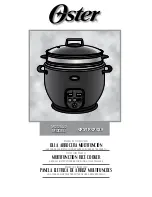
Uses, Tables and Tips
26
Uses, Tables and Tips
Pans
•
You can recognise good pans by their bases. The base should be as thick and
flat as possible.
•
Pay particular attention when buying new pans to the diameter of the base.
Manufacturers often give only the diameter of the upper rim.
•
Pots with aluminium or copper bases can cause metallic discolouring on the
ceramic glass surface, which is very difficult or impossible to remove.
•
Do not use cast iron pans or pans with a rough, burred or damaged base. This
can produce permanent scratching if the pan is slid across the surface.
•
When cold, pan bases are normally
bowed slightly inwards (concave). They
should never be bowed outwards (con
vex).
•
If you wish to use special types of pan
(e.g. a pressure cooker, simmering pan,
wok, etc.), please observe the manufac
turer's instructions.
2
Energy saving tips
•
Always position pots and pans before switching on the cooking zone.
•
Whenever possible always position the
lids firmly on pots and pans to cover
completely.
•
Switch off the cooking zones before the
end of the cooking time to use the resid
ual heat such as to keep foods warm or
for melting.
•
The base of the pan should be the same
size as the cooking zone.
















































